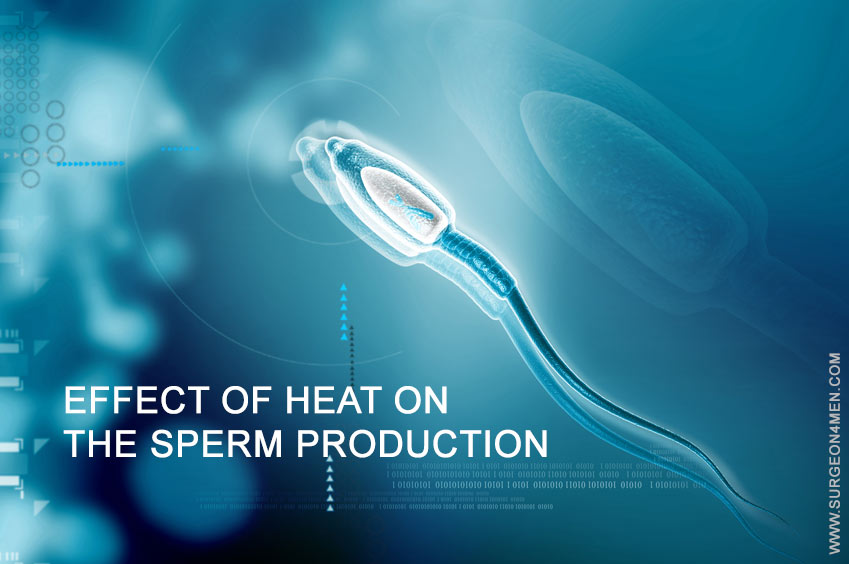Effect of Heat on the Sperm Production.
Are you aware that contraception is a multi-billion dollar industry? A lot of females use different types of physical and chemical methods for contraception that are not only costly, but are also hazardous for health in the long term. However, experts suggest that using simple remedies such as a hot shower or exposure to steam can successful reduce the number of viable sperms in the male ejaculate and can act as a natural contraceptive method.
On the contrary, if you and your partner are looking to conceive, this is definitely something you should watch out for. In order to learn more about the mechanisms responsible for interfering with normal spermatogenesis, it is very important to learn more about the normal physiology of male reproductive tract.
Temperature of Testes
- Cremaster and Tunica Dartos: The specialized muscles of testes help in contracting the testes and bringing it closer to the body in case a sudden drop in environmental temperature. Under normal circumstances, these muscles tend to stay in a relaxed position which helps in keeping the testes away from the body-wall.
- Blood Temperature: The blood flowing in the testicular region has a slightly lower temperature due to difference in the arrangement and alignment of vascular network. Likewise, the effect and influence of heat is only minimal.
- Scrotal Skin: The scrotal skin covering the testes is made up of fat which helps in maintaining insulation. In other words, abrupt environmental conditions have a minimal impact on the process of spermatogenesis unless the changes are severe.
- Sweat Glands: Sweat glands are present abundantly over the scrotal skin which provides effective cooling in testes.
Small Testicular Temperature Changes
Slight fluctuations in testicular temperature are considered normal. These changes are a result of environmental or external factors; such as:
- Fabric and cut of clothing
- Postural changes
- Sitting in a cool or hot tub
Effect of Heat on The Sperm Production
Scientists believe that the production of sperms is a sensitive process which is significantly affected by exposure to high temperatures.
What Happens When Testicular Temperature Is Raised?
Here is how high testicular temperature impedes the process of spermatogenesis (2):
- The cell division process (mitotic division) of sperm cell is altered (thereby increasing the risk of abnormal cells in the ejaculate).
- The production of a testicular protecting hormone inhibin is reduced with persistent heat exposure
- Heat may impede the process of sperm development spermatogenesis. This can destroy the primary and secondary spermatocytes.
Heat As Reliable Contraceptive?
According to a new study, male participants who were provided with the heat treatment (in the form of steam baths or hot showers) manifested significant decrease in the production of sperm i.e. less than 15 million sperms per milliliter. Additionally, contraception in males through heat treatment can be achieved by following methods,
- Suspensories: It is a typical method of heat treatment in which a constantly raised temperature of 1-2.5⁰C is provided to testes for a longer period of time.
- External Heat Supply: A 10⁰C raise in temperature for constant 30 minutes cam be provided with the help of electrical heaters (electrical warming devices) or through sitz bath.
But it is imperative to keep in mind that:
- Long term exposure to heat can cause permanent damage to male reproductive structures
- The risk of genetic abnormalities increases in the offspring if sperm are exposed to excessive heat.
References:
- Thonneau, P., Bujan, L., Multigner, L., & Mieusset, R. (1998). Occupational heat exposure and male fertility: a review. Human reproduction, 13(8), 2122-2125.
- Lue, Y., Sinha Hikim, A. P., Wang, C., Im, M., Leung, A., & Swerdloff, R. S. (2000). Testicular Heat Exposure Enhances the Suppression of Spermatogenesis by Testosterone in Rats: The “Two-Hit” Approach to Male Contraceptive Development 1. Endocrinology, 141(4), 1414-1424.
- Lue, Y. H., Sinha Hikim, A. P., Swerdloff, R. S., Im, P., Taing, K. S., Bui, T., … & Wang, C. (1999). Single Exposure to Heat Induces Stage-Specific Germ Cell Apoptosis in Rats: Role of Intratesticular Testosterone on Stage Specificity 1. Endocrinology, 140(4), 1709-1717.
